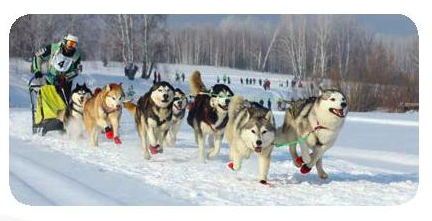Work in groups. Look at the picture, and discuss what you know about Alaska (its location, climate, native people, culture, ...)
Reading
1. Work in groups. Look at the picture, and discuss what you know about Alaska (its location, climate, native people, culture, ...).
(Làm việc nhóm. Nhìn vào bức tranh và thảo luận về những gì bạn biết về Alaska (vị trí, khí hậu, người bản địa, văn hóa, ...)
Read the text and check your answers.
If you go to the American state of Alaska, you might find the traditional lifestyle there interesting. Although Alaska is quite large, with nearly 1.7 million square kilometres, it has a small population of about 730,000.
The native peoples in Alaska still maintain many of their traditions. They keep their old ways of making arts and crafts alive. Various native groups have their own special styles of carving or weaving as well as their unique tribal dances and drumming. Therefore, visitors to Alaska may experience some of their culture in their villages. They may see performances of traditional music and native art in galleries and museums.
Alaska is also known for its unusual method of transport - the dogsled. Today, dog sledding (= mushing) is more of a sport than a true means of transport The best-known race is the Iditarod Trail Sled Dog Race, a 1,510 km race from Anchorage to Nome. Mushers from all over the world come to Anchorage each March to compete for cash and prizes.
Alaska is a U.S. state on the northwest extremity of North America. A semi-exclave of the U.S., it borders British Columbia and the Yukon in Canada to the east, and it shares a western maritime border in the Bering Strait with the Russian Federation's Chukotka Autonomous Okrug. To the north are the Chukchi and Beaufort Seas of the Arctic Ocean, and the Pacific Ocean lies to the south and southwest.
Indigenous people have lived in Alaska for thousands of years, and it is widely believed that the region served as the entry point for the initial settlement of North America by way of the Bering land bridge. The Russian Empire was the first to actively colonize the area beginning in the 18th century, eventually establishing Russian America, which spanned most of the current state. The expense and logistical difficulty of maintaining this distant possession prompted its sale to the U.S. in 1867 for US$7.2 million (equivalent to $140 million in 2021). The area went through several administrative changes before becoming organized as a territory on May 11, 1912. It was admitted as the 49th state of the U.S. on January 3, 1959.
Abundant natural resources have enabled Alaska—with one of the smallest state economies—to have one of the highest per capita incomes, with commercial fishing, and the extraction of natural gas and oil, dominating Alaska's economy. U.S. Armed Forces bases and tourism also contribute to the economy; more than half the state is federally-owned land containing national forests, national parks, and wildlife refuges.
The Indigenous population of Alaska is proportionally the highest of any U.S. state, at over 15 percent. Various Indigenous languages are spoken, and Alaskan Natives are influential in local and state politics.
Xem toàn bộ: Giải Tiếng Anh 8 Global Success Unit 6 Skills 1

Bình luận